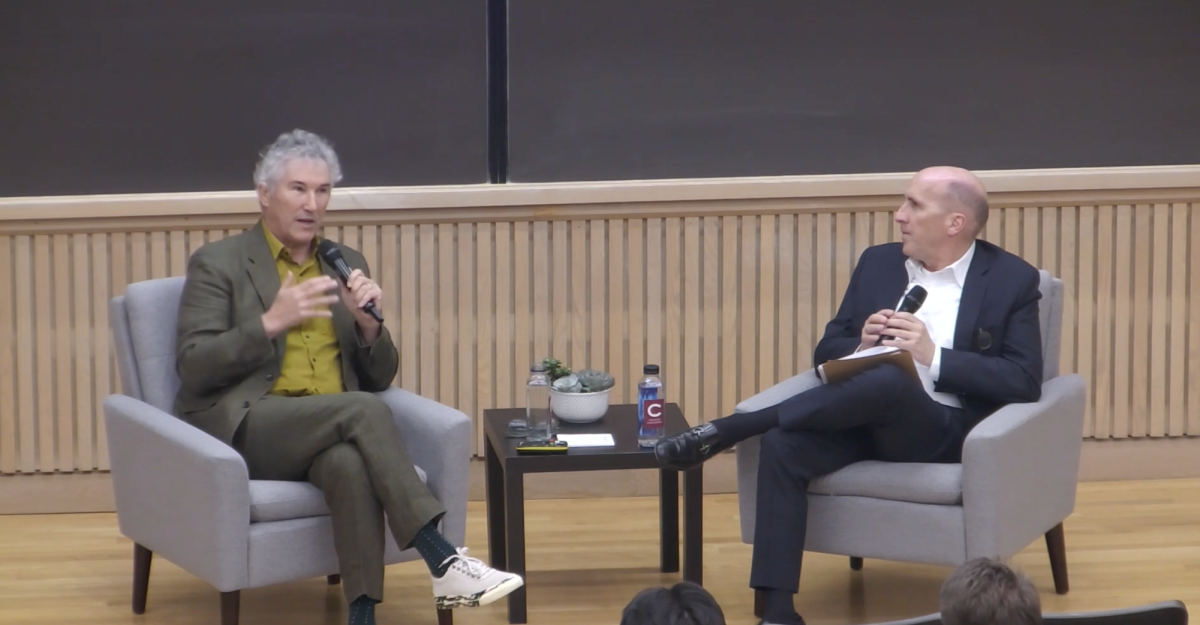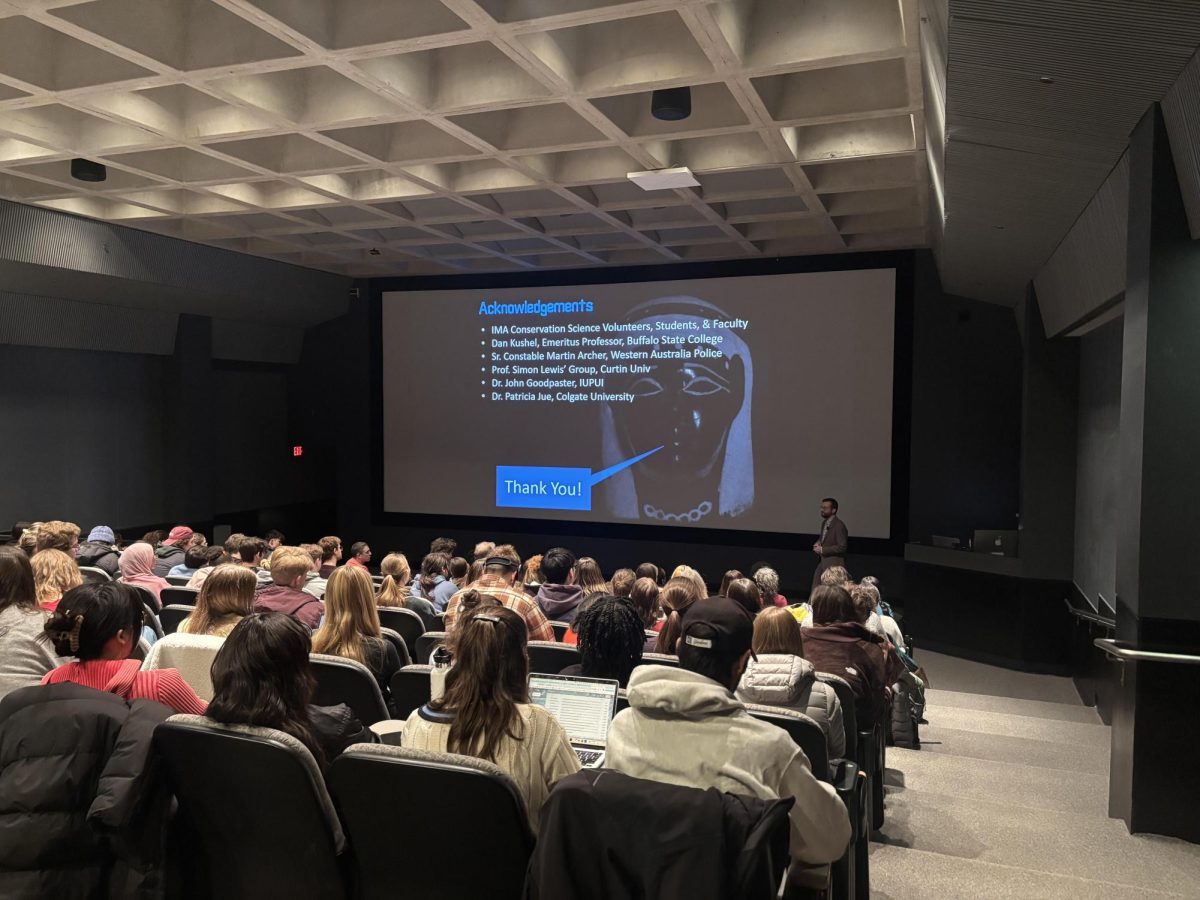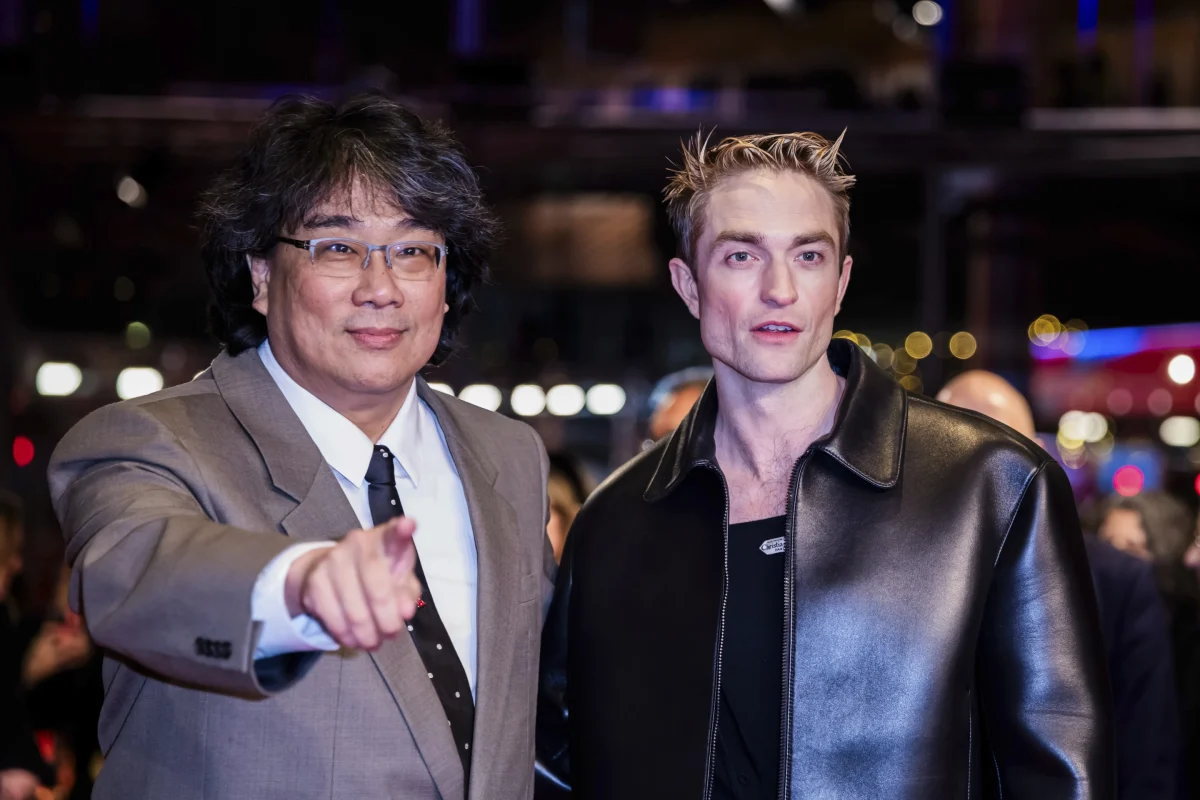Colgate University hosted Dario Pozzoli, professor of economics at Copenhagen Business School, on Friday, Dec. 1. The lecture was a part of the Colgate-Hamilton Economics Seminar Series, a joint series shared with Hamilton College. The collaboration between the colleges gives visiting scholars the opportunity to present their findings to an audience.
Nicole Simpson, professor of international economics and chair of the department of economics, explained the importance of the Colgate-Hamilton Economics Seminar Series.
“We have a joint seminar series with Hamilton College and it is a good way to promote our research and scholarly interests, so the seminar is when we get to invite colleagues from other institutions to tell us about their work,” Simpson said.
Pozzoli’s research focused on the relationship between labor shortages and robots. Specifically, Pozzoli’s work examines how changes in the supply of low-skill labor may affect robot adoption by firms in an advanced economy that have the capacity to invest in sophisticated technology.
“In line with popular press, when there is an increase in supply of low-skill workers, firms reduce investments in robots, suggesting a relationship of substitution between low-skill workers and robots,” Pozzoli said.
Assistant Professor of Economics Mike Mei commented on Pozzoli’s contribution to the existing literature on labor economics.
“I found Dario Pozzoli’s research very interesting because his work builds on existing labor economics research studying the effects of automation on employment, but he approaches this topic from another angle, arguing that labor shortages contribute to the adoption of robots,” Mei said.
For his dataset construction, Pozzoli linked information on immigrants across Danish municipalities to film-level robot data. Pozzoli focused on Denmark and immigrants because Denmark experienced an immigration shock in the 1980s, and immigrants are more likely to work jobs that can be replaced by robots.
Mei commented on Pozzoli’s discussion on dataset construction.
“He brings forth very compelling evidence from employer-employee data in Denmark,” Mei said.
Pozzoli presented graphs showing the evolving relationship between immigrants and technology, revealing what drove Danish society towards robotization.
“His research sheds light on the way automation has happened,” Mei said. “The extent of automation in any industry or firm is not solely determined by inevitable technological advances but, instead, also influenced by forces like immigration.”
At first, immigration and automation were substitutes. If you had an increase in immigrants, firms could reduce investment in robots, and vice versa.
“In equilibrium, companies use a mix of robots and foreign workers,” Pozzoli said.
As robots became cheaper and more capable, the balance shifted. Companies started to choose robots over immigrants, regardless of labor supply and demand.
“The relationship is weakening over time,” Pozzoli said. “Cost advantage for robots is increasing so much that you don’t compete anymore with humans.”
Pozzoli’s focus on immigrants and labor especially resonated with Colgate professors.
“His work is really interesting and relevant because some of us work on issues of immigration and labor economics within the two departments,” Simpson said.
Pozzoli’s lecture allowed listeners the opportunity to learn more about the intersection between technology and labor.














